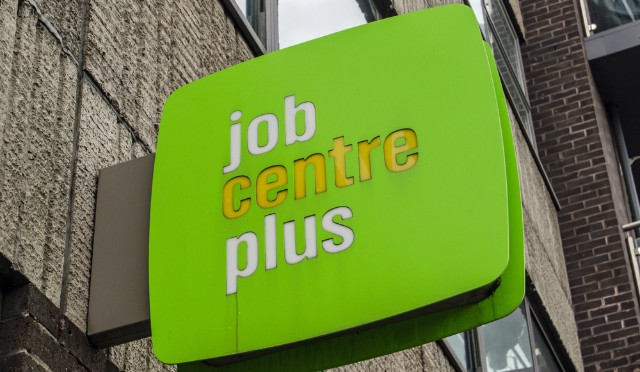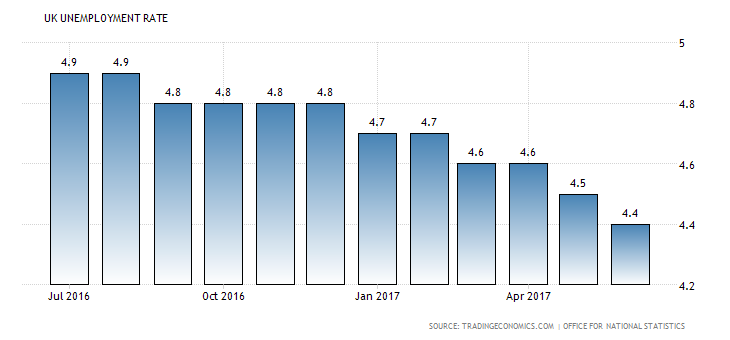
The latest employment data from the UK showed that the unemployment rate fell further in the second quarter. However, despite the drop in the unemployment rate, wages continued to slow.
Data from the UK’s Office for National Statistics showed yesterday that the ILO unemployment rate fell to 4.4% in the second quarter ending June. Compared to a year ago, this was lower than 4.9%. Economists were expecting to see the UK’s unemployment rate remain unchanged at 4.5%. The unemployment rate was the lowest since 1975, according to the ONS.

UK Unemployment rate: 4.4% Source: Tradingview.com
The employment rate, as a result, rose to 75.1%, which was the highest since record keeping began in 1971. The UK’s number of unemployed people also decreased by 57,000 compared to the previous quarter to 1.48 million. Most of the jobs came from the construction, accommodation and services sectors.
The ONS reported that a total of 97,000 jobs were created with most of the positions coming from full-time positions. The UK’s employment minister, Damian Hinds said that the data reflected that the number of people in work was the highest levels and said that the task was to build upon this success.
ONS statistician Matt Hughes said that the employment picture was strong but flagged concerns on real wages continuing to decline.
Wages remained slow with the average earnings including bonuses rising 2.1% on an annual basis during the three months ending June 2017. This was slightly higher than the previous quarter’s gain of 1.8%.
However, with inflation staying put at 2.6%, wages continued to lag behind.
According to the ONS, productivity continued to decline. Data showed that productivity was 0.1% lower compared to the previous quarter. Interestingly, the number of non-UK workers continued to rise with most of the workers from EU countries.
UK jobs data paints a mixed picture
The labor market data showed a mixed picture overall. Although it was evident that the labor market was tightening, wage growth remained weak, failing to catch up with the steady acceleration in inflation.







